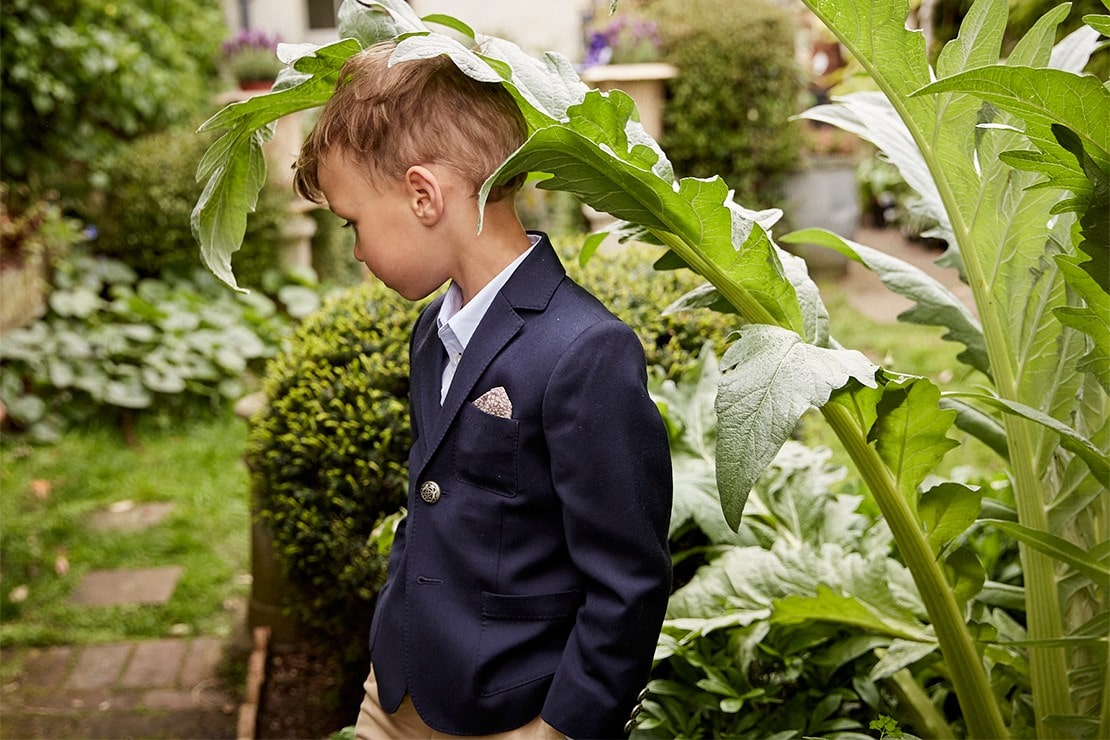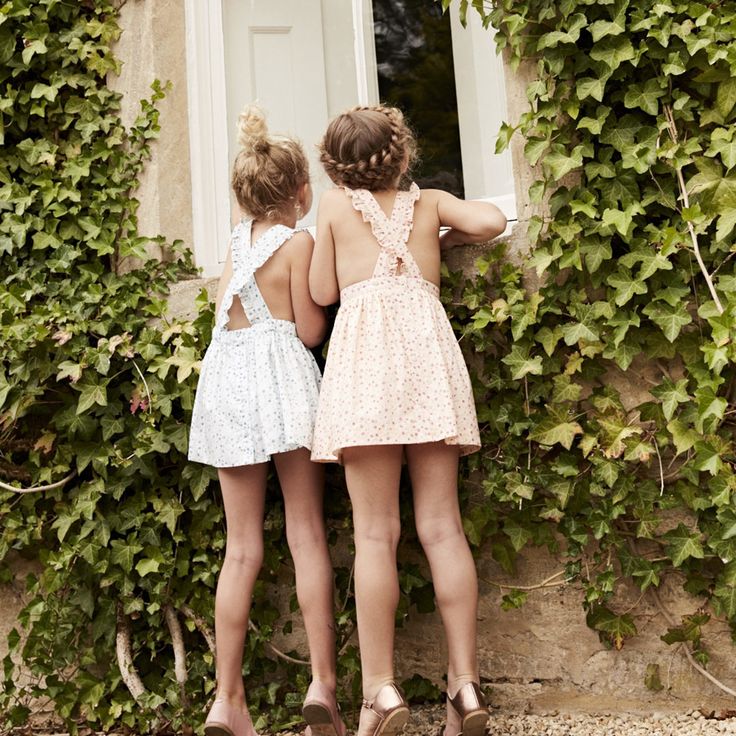Children's Etiquette: Weddings
17th April 2023
Before deciding if you want to bring your child or children to a wedding, make sure the invitation includes your entire family. As a lot of weddings choose to have a child free event, and unless your child has been given the honour of flower girl or page boy. Next, you’ll need to consider if your child is old enough to attend; then go over some ground rules and etiquette your child should know before the big day.
“If it's a wedding, describe what the service will be like and say something like, "We can't talk during the ceremony because we don't want to distract anyone, but we can talk and dance afterward at the party. By age 4, many kids can: sit quietly, with some parental preparation and with quiet toys to play with, during short ceremonies (15 minutes or so). By age 8, many kids can: sit quietly during most ceremonies of a half hour or a bit longer and understand the importance of special or solemn occasions.” – Babycenter.com
HOW TO DECLINE AN INVITATION:
If you can’t attend the wedding of a close friend or family member, a phone call is always a polite gesture. If you have received an invitation online, reply promptly and don’t let it sit in your inbox; many of these invitations offer a “maybe” or “undecided” option, and this response is better than ignoring the invitation completely. Remember: when it comes to online invitations, the host will be able to see if you have viewed it and will wonder why you haven’t responded if you don’t send a reply.

GROOMING:
While a child may shower every day, this doesn’t necessarily mean they are entirely clean. There is nothing more off-putting then seeing a child with a dirty face or dirt under their fingernails. I am a fan of the old-school yellow duck scrubbing brush to clean glitter, soil, and everything else that gets caught under your child’s finger nails. This can be done in the bath or at the sink. Keeping your child’s nails cut short will also help to keep dirt to a minimum. Get them into the habit of washing their hands before and after meals and making sure their face is clean after eating.
Teeth must be brushed twice a day, upon waking and just before bed. If your child is a tween, they might want to put on deodorant; I tend to favour organic brands. Hair should always be clean and brushed. When we were little, my father would always send me or my sister away to brush our hair before we were allowed to sit at the table. In this day and age, it can be difficult to enforce the idea that children should ‘dress for dinner,’ but we can still enforce the idea that families should appear presentable when they eat together. No adult wants to see (or smell) an unkempt child and getting your child to adopt hygienic habits early on will help them to fit in socially in later years and not run the risk of feeling excluded.
WHAT TO WEAR:
This depends on the type of wedding. Dress your child appropriately for the event's dress code – it can be fun and sparkly too.
For a casual wedding: Boys should wear a button down shirt, a tie, a jacket and slacks. They don’t necessarily have to wear formal shoes, but they can do so if you have a pair at hand – though make sure they are polished! When my boys were younger, I encouraged them to dress formally, but with a fun element, like some nice converse sneakers with their suits. That way, I wasn’t being too strict. The trick is to let them choose, but teach them the dress codes.
For Girls, a dress is usually appropriate, but if your daughter wants to wear pants or shorts then be sure to smarten them up. A skirt is also an easy option with a pretty top or sweater...
For a Formal Wedding: Boys should wear a white, pale blue, checked or striped button-down shirt with suit pants or chinos and a jacket. They can wear either black or brown belts, though brown is usually considered more casual. Girls, dresses are appropriate, and make it fun!
Remember: Formal means you make an effort.
DRESSING ETIQUETTE - GENDER CONSIDERATION:
While the following pages set out some traditional clothing guidelines for boys and girls, these days the boundaries are not always so clearly defined. If your child doesn’t want to be pigeonholed into dressing one way or another, talk to them about what they would feel comfortable wearing. Agree on an outfit that still fits within the parameters required by the event – whether casual, informal, or formal – and it from there. Of course, if there are no formalities to observe, then anything goes (within reason!)
While we all have to wear clothing that may not be our first choice from time to time, but no one should ever be forced to wear something that they feel doesn’t reflect who they are.

BEING A GUEST:
Being a guest is an honor that someone has bestowed upon you. That might sound a bit pretentious, but if you think of it that way, it will make you be a better guest. If someone has invited you to their wedding, you must be respectful and courteous. There is nothing more gratifying than inviting a child who turns out to be polite, respectful and well mannered.
When you take your child to a formal party, like a wedding, they are going to come into contact with adults they haven’t met before. If I am introducing my child to an adult whom they are meeting for the first time, they are expected to shake hands, look the person in the eye and introduce themselves. This is easier said than done, and I still sometimes have to remind my children to stand up, shakes hands, or kiss the adult on the cheek if the situation warrants. But most importantly, I want my children to make eye contact. This shows the other person that we are interested and engaged – which brings me to my next rule: being an engaged listener.
It’s also important to teach your child that, if seated, it’s considered polite to stand when being introduced – and that this rule applies at any age.
DINNER ETIQUETTE:
When my children were a bit older and were living in the UK, we were often invited to formal events. Before attending, I had to teach my kids about the rules that are observed at a formal dinner. Unlike at casual events, at a formal dinner, you can’t just talk to the person seated across from you. During the first course, it is traditional for women to talk to the person seated to their left (which generally means the male guests will be talking to the person on their right). After the first course, you turn to talk to the person on the other side (the “turning table"), at dessert, you revert back to the first side, but this time it’s a little more relaxed and you can talk both ways. This might sound stuffy, but the concept was created so that everyone has the chance to speak and no one is left out.
THE KIDS TABLE:
At weddings, children are usually seated at their own table. If your child doesn’t know any other children, you might want to spend more time at their table helping them adjust to this new situation. Remind them to be mindful and respectful to the proceedings during any ceremonies, to whisper if they have to speak, and never to take out electronics during a wedding or religious service or any kind.
CHILDCARE:
Sometimes the bride and groom will arrange for children of guests to be in their own area or room with supervised babysitters. If you plan to bring your nanny or own childcare, ask the bride and groom if they can make arrangements for them to sit at the kids table, however, they are not obligated to include them in the event. If you can, arrange to have your nanny or babysitter available to take the kids home early, so you and your partner can enjoy the rest of your evening carefree.
Have a question for MC?
Email us at askmc@mariechantal.com

Join Us On Spotify
Browse MC's recommended playlists for bathtime, playtime and then when baby has gone to bed, grown-up time.



